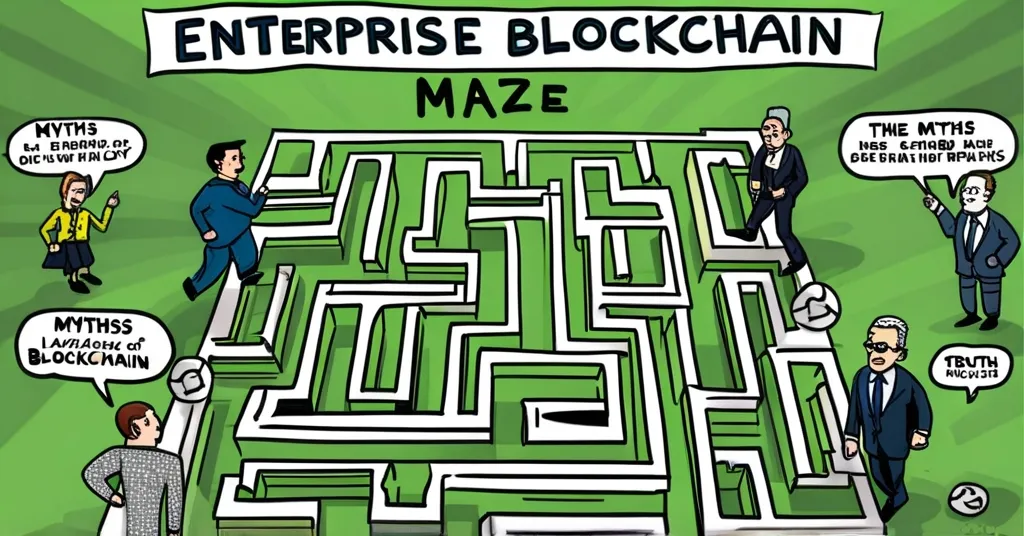Forrester Report Debunks 11 Enterprise Blockchain Myths, Clarifies Adoption Path

Forrester’s Reality Check: Dispelling Enterprise Blockchain Myths
Forrester Research’s latest report is cutting through the confusion surrounding enterprise blockchain by challenging 11 myths that have long misled potential users. Authored by Martha Bennett, this insightful work aims to smooth the path for blockchain adoption by clarifying these misconceptions.
- The global blockchain technology market is valued at $17.26 billion, with projections of an 87.7% annual growth rate.
- Common myths include blockchain’s supposed existence, decentralization, and trustlessness.
- Security and decentralization vary significantly across blockchain networks.
- Smart contracts won’t replace legal professionals entirely.
- Transparency in blockchain isn’t always beneficial for businesses due to confidentiality concerns.
Forrester hits the nail on the head by asserting that “the blockchain” as a concept doesn’t exist singularly. The term encompasses various networks, each with its own structure and purpose. While Bitcoin and Ethereum are paragons of decentralization, this isn’t a universal trait. Security, too, isn’t guaranteed and hinges on the network’s design.
One of the big myths is the idea that smart contracts could render lawyers obsolete. Sure, they can streamline and automate specific tasks, but the complexity of legal interpretation and judgment can’t be boiled down to mere code.
“Code is not law,” stresses Bennett, underscoring the limits of relying solely on smart contracts for legal matters.
Transparency, often praised as a blockchain virtue, can backfire for enterprises dealing with sensitive information, necessitating a delicate balance between openness and confidentiality.
Successful blockchain adoption doesn’t solely rest on technical prowess but also requires a deep understanding of how decentralization, trust, and security interplay within these networks. Over the past decade, blockchain’s applications have transformed enterprise operations, particularly in sectors like AI authenticity and supply chain management.
The report goes beyond myth-busting to highlight potential blockchain applications, such as enhancing fraud detection through AI integration and improving supply chain transparency. The rise of tokenization in asset management and blockchain’s role in ESG compliance further illustrate its transformative capacity.
Key Takeaways:
What are some common myths about blockchain technology?
Common misconceptions include ideas about decentralization, trustlessness, and the potential for smart contracts to replace legal functions.Can blockchain networks completely eliminate third parties?
No, third-party involvement is often crucial, especially in enterprise settings.Are blockchain networks inherently secure?
Security is heavily dependent on the network’s architecture and implementation.Can smart contracts replace lawyers?
While they can automate certain processes, smart contracts cannot substitute the comprehensive expertise of legal professionals.How does transparency affect enterprises using blockchain?
Transparency presents challenges in maintaining confidentiality, which businesses must manage carefully.
Forrester’s report demystifies blockchain by providing a roadmap for enterprises to navigate and leverage its true potential, setting the stage for more informed and strategic blockchain integration.



